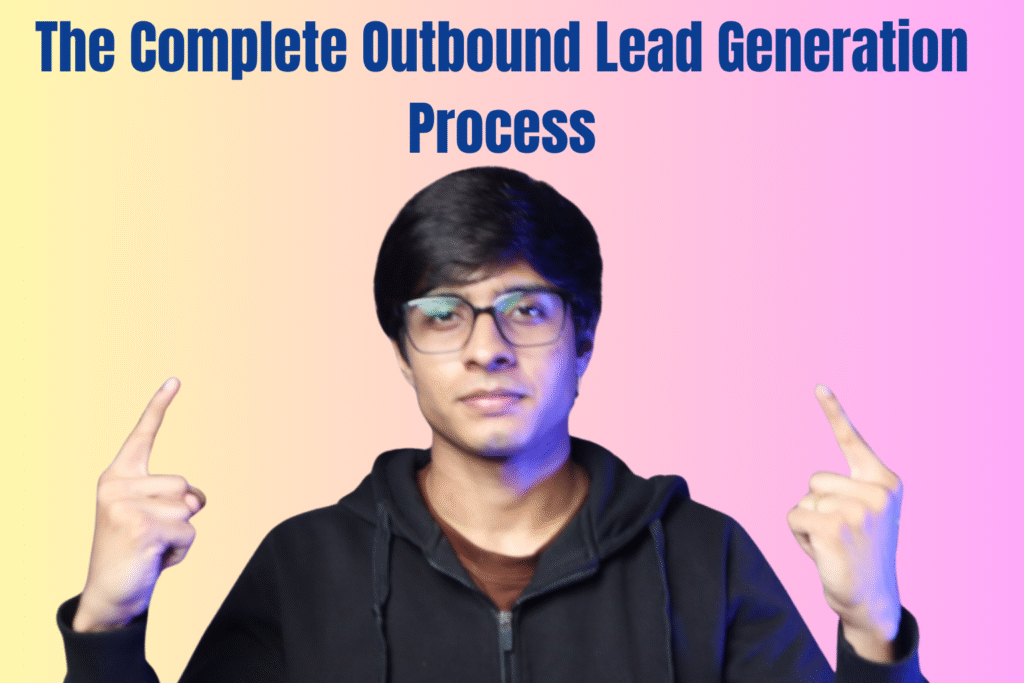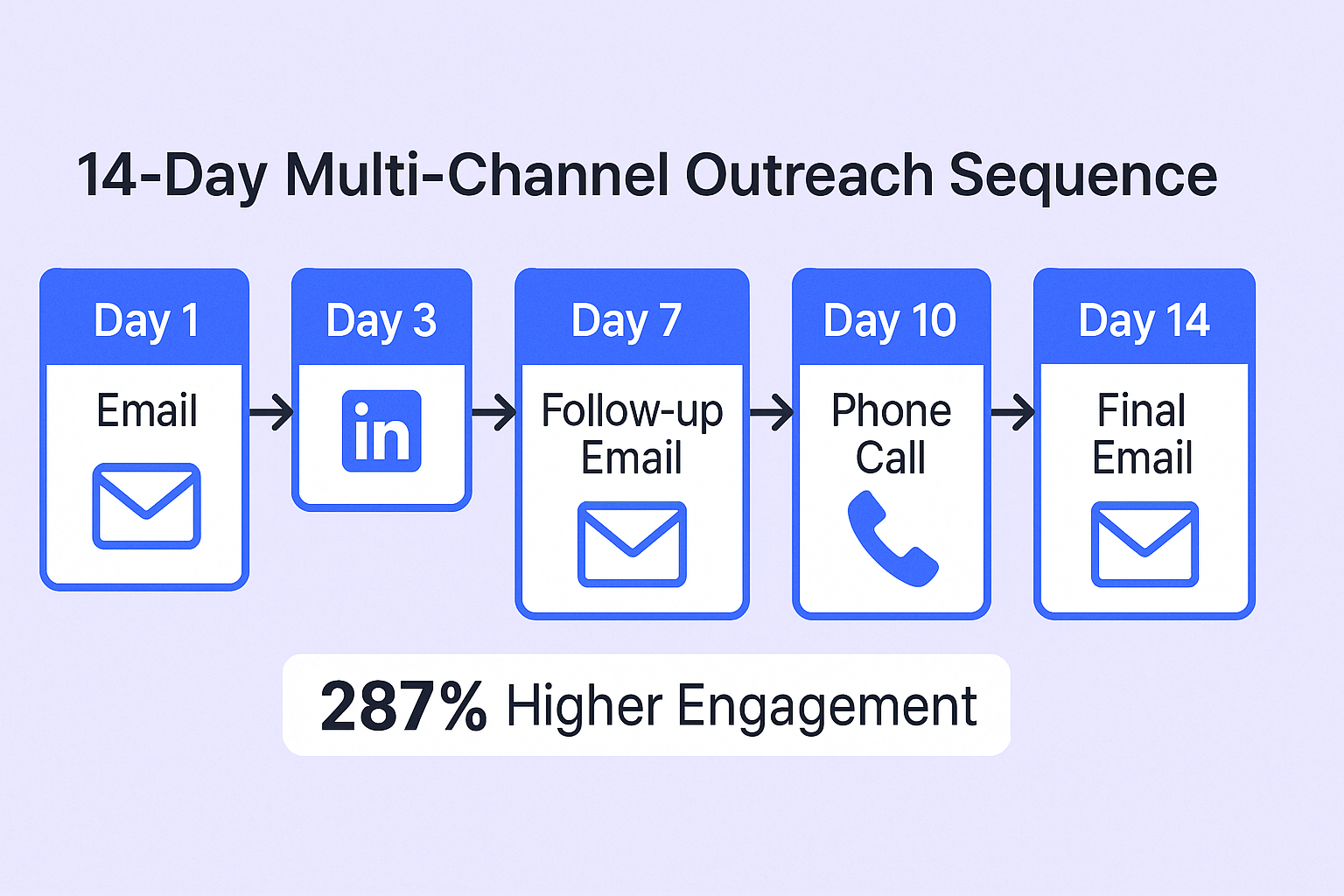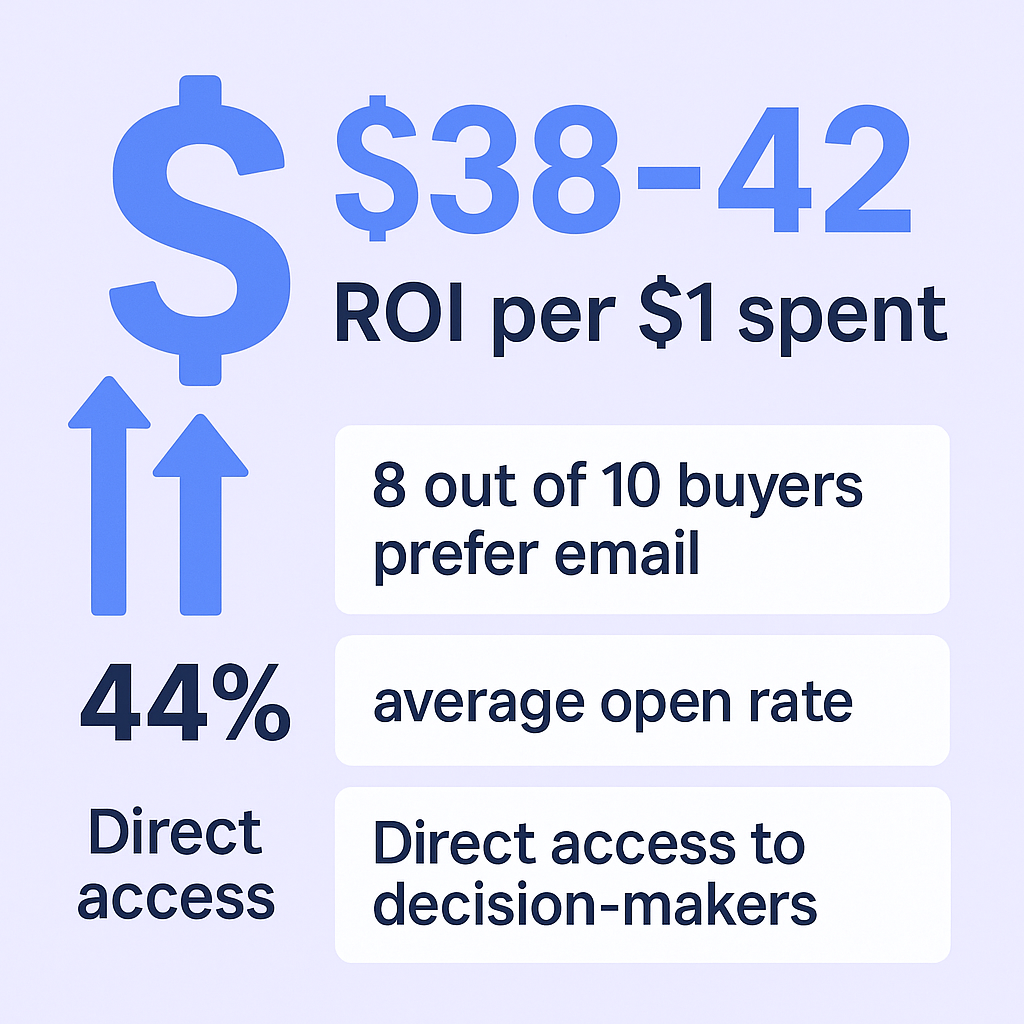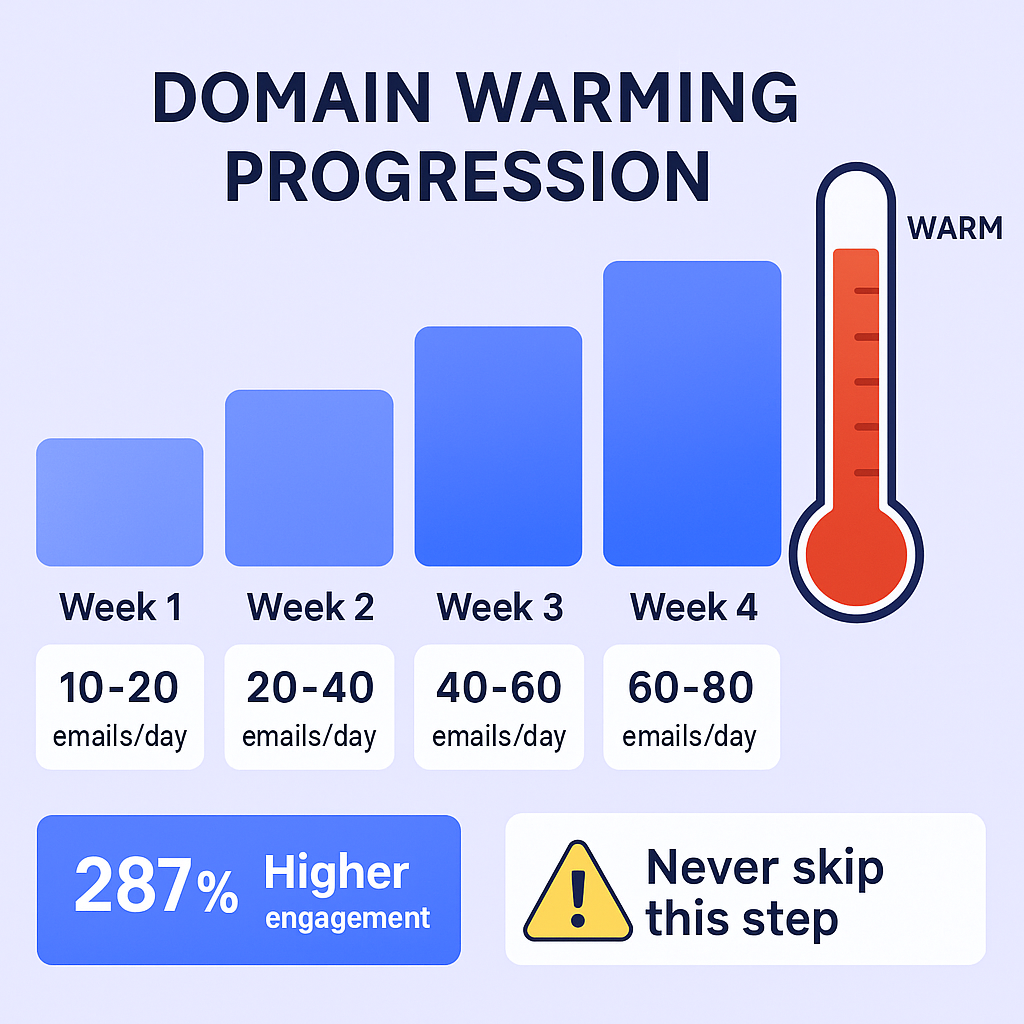- blog
- Lead Generation
- The Complete Outbound Lead Generation Process: Your Path to Consistent Pipeline Growth

The Complete Outbound Lead Generation Process: Your Path to Consistent Pipeline Growth
Table of Contents
Getting quality leads isn’t just important—it’s everything. While 61% of marketers rank lead generation as their biggest challenge, smart BDRs and AEs know that mastering the outbound lead generation process is their secret weapon for hitting quota consistently.
Here’s the reality: only 18% of marketers felt that their outbound lead generation efforts provided valuable leads. But for those who crack the code? They’re building predictable revenue machines that don’t depend on marketing-generated leads alone.
This guide walks you through everything you need to know about the outbound lead generation process, with a laser focus on what actually works in 2025.
What is Outbound Lead Generation?
Outbound lead generation is the process of proactively reaching out to potential customers who may not yet be aware of your product or service. Unlike inbound marketing where prospects come to you, outbound means you’re starting the conversation.
Think of it as being a problem-finder rather than an order-taker. Your job is to identify prospects who have challenges they might not even realize exist, then position your solution as the perfect fit.
The core outbound lead generation process involves:
- Research and targeting your ideal customer profile (ICP)
- Finding contact information for decision-makers
- Crafting personalized outreach across multiple channels
- Following up consistently until you get a response
- Qualifying interest and booking discovery calls
- Nurturing relationships until they’re ready to buy
For BDRs, this process is your bread and butter. You live at the top of the funnel, turning cold prospects into warm opportunities. AEs then take these qualified leads and guide them through the sales process to close deals.
The magic happens in the handoff. When a BDR passes a well-researched, genuinely qualified lead with rich context, the AE can hit the ground running. This seamless transition shortens sales cycles and increases win rates.
How Does Outbound Lead Generation Work?
The outbound lead generation process follows a systematic approach designed to turn strangers into sales opportunities. Here’s how it works in practice:
Research and Targeting (BDR Focus) You start by identifying companies that match your ideal customer profile. This means looking at firmographics like company size, industry, technology stack, and recent growth indicators. The average cost per lead generated in the industry is $198.44, so precision in targeting is crucial for ROI.
Multi-Channel Outreach Modern outbound isn’t just email or just calls—it’s an orchestrated approach across channels. Segmented email campaigns drive 30% more opens and 50% higher click rates than non-targeted batches, but combining email with LinkedIn messages, calls, and even video creates a powerful touch sequence.
Qualification and Handoff (BDR to AE) Once a prospect shows interest, the BDR’s job shifts to qualification. You’re looking for budget, authority, need, and timing (BANT). A properly qualified lead means the AE can focus their time on prospects most likely to close, rather than chasing unqualified opportunities.
Sales Process (AE Focus) AEs take qualified leads through discovery, demo, proposal, and negotiation phases. Since sales reps spend only about 28% of their week actually selling, having properly qualified leads from BDRs is essential for productivity.
Automation and Technology Using marketing automation software can increase qualified leads by as much as 451%. The right tech stack handles email sequences, tracks engagement, and ensures no prospect falls through the cracks.
🎯 Systematic LinkedIn Prospecting
Automated targeting and engagement reaches decision makers while you close deals
Outbound vs Inbound Lead Generation
Understanding the difference between outbound and inbound lead generation is crucial for knowing how to approach each type of prospect effectively.
Outbound Lead Generation (Push Strategy) You proactively reach out to prospects through cold emails, calls, LinkedIn messages, and direct mail. These prospects often don’t know they have a problem you can solve. Your job is to educate and create urgency.
Characteristics:
- Problem-unaware prospects who need education
- Cold start requiring trust-building from scratch
- Higher effort per lead but more control over targeting
- Shorter wait times for results once you start outreach
- Predictable pipeline when done systematically
Inbound Lead Generation (Pull Strategy) You attract prospects through content marketing, SEO, webinars, and social media. These prospects are actively researching solutions to known problems.
Characteristics:
- Problem-aware prospects already educating themselves
- Warm or hot leads with existing intent
- Lower effort per lead but less control over timing
- Longer setup time to build content and authority
- Variable pipeline depending on market conditions
Why Both Matter Content marketing generates three times more leads than outbound marketing at a fraction of the cost, which makes inbound attractive. However, outbound gives you control. You can target specific accounts, reach decision-makers directly, and generate meetings on your timeline.
The most successful sales teams use both. Inbound fills the funnel with interested prospects, while outbound targets high-value accounts that might never find you organically.
For BDRs and AEs, this means different skill sets:
- Inbound leads: Act as a consultant helping prospects evaluate options
- Outbound leads: Act as an educator and challenger, interrupting the status quo
Outbound Lead Generation Strategies
Success in 2025 requires a multi-channel approach. Here are the proven strategies that work:
Cold Calling: The Direct Approach 8 out of 10 buyers prefer to be contacted by email, but calling still has its place. The key is research-backed conversations with clear goals. Don’t try to close on the first call—aim to book a 15-minute discovery call.
Best practices:
- Call with a specific goal (book meeting, not close deal)
- Research the prospect and company beforehand
- Start with a human question like “How have you been?”
- Keep your pitch concise and value-focused
LinkedIn Social Selling 80% of B2B businesses are generated through LinkedIn, making it essential for B2B outbound. But effective LinkedIn outreach isn’t about sending generic InMails.
Winning approach:
- Build your personal brand with valuable content
- Engage authentically on prospects’ posts before reaching out
- Send personalized connection requests with context
- Reference shared connections or mutual interests
Email Outreach (The Foundation) Email remains the cornerstone of modern outbound. Over 47% of recipients open emails based solely on subject lines, making your first impression critical.
Multi-Channel Sequences Companies that use a multi-channel strategy see 287% higher customer engagement than single-channel approaches. Your sequence might look like:
- Day 1: Email
- Day 3: LinkedIn connection request
- Day 7: Follow-up email
- Day 10: Phone call
- Day 14: Final email
Account-Based Marketing (ABM) For high-value accounts, ABM treats each target company as its own market. You

research the company’s challenges, identify multiple stakeholders, and coordinate outreach across the buying committee.
💼 LinkedIn-First Sequences
Start with LinkedIn’s 40-50% engagement then layer in email follow-ups
Why Cold Emailing is the Best Outbound Lead Generation Strategy
While multi-channel is important, cold email stands out as the most effective single channel for most B2B sales teams. Here’s why:
Buyer Preference 8 out of 10 buyers prefer to be contacted by email. You’re meeting prospects where they want to be met, not interrupting their day with an unexpected call.
Incredible ROI The numbers speak for themselves: email marketing delivers an average ROI of $38 to $42 for every $1 spent. For cash-conscious startups and quota-driven reps, this ROI is impossible to ignore.
Scalability and Measurement

Cold email allows you to reach hundreds of targeted prospects with personalized messages through automation. You can track every metric—open rates, reply rates, click-through rates—giving you real-time data to optimize your approach.
Non-Intrusive Nature Unlike calls that interrupt someone’s day, emails can be read at the recipient’s convenience. This creates a more positive first impression and higher likelihood of engagement.
Direct Access to Decision-Makers Email bypasses traditional gatekeepers and lands directly in the inbox of the C-level executive or VP you need to reach.
Current Performance Benchmarks Understanding realistic expectations is crucial:
- The average open rate for cold emails is 44%
- The average cold email reply rate is just 8.5%
- The average cold email response rate is 5.1%, with the average open rate being 27.7%
- The average conversion rate is 0.2153% (1 deal for every 464 emails sent)
These benchmarks show why volume and consistency matter in cold email campaigns.
How to Run a Successful Cold Email Campaign in Simple Steps
Here’s your step-by-step playbook for building a cold email system that generates consistent pipeline:
The Technical Foundation
Before writing any copy, ensure your emails actually reach the inbox. 70% of cold emails are marked as spam due to their subject lines, but technical setup issues often send emails to spam before subject lines even matter.
Domain Setup Never use your company’s primary domain for cold outreach. Buy alternate domains (e.g., getyourcompany.com, tryyourcompany.com) to protect your main domain’s reputation.
Email Authentication Set up SPF, DKIM, and DMARC records. These technical settings prove to email providers that you’re a legitimate sender, not a spammer.
Domain Warming New domains need to build sending reputation gradually:
- Week 1: 10-20 emails per day
- Week 2: 20-40 emails per day
- Week 3: 40-60 emails per day
- Week 4: 60-80 emails per day
Build Your Prospect List

📊 Skip The 4-Week Warmup
LinkedIn outbound launches immediately with guaranteed delivery to decision makers
The quality of your list determines campaign success. On average, organizations generate 1,877 leads, but quality trumps quantity every time.
Define Your ICP Look at your best customers. What do they have in common? Document:
- Company size (employees, revenue)
- Industry and vertical
- Technology stack
- Growth stage
- Geographic location
Find Decision-Makers Target senior roles with budget and authority: VPs, Directors, C-level executives. Use LinkedIn Sales Navigator to identify prospects who fit your criteria.
Verify Email Addresses Run your entire list through an email verification service before sending. This removes bad addresses and keeps your bounce rate below 3-5%.
Craft Personalized Emails
Emails featuring customized message content have a 32.7% enhanced response rate. Here’s how to personalize at scale:
Subject Lines Keep them short (3-7 words), intriguing, and personalized. Personalized subject lines can increase open rates by 26%.
- Good: “Quick question about {{Company}}”
- Better: “Idea for your sales ops team”
- Best: “{{FirstName}}, saw your post on AI in sales”
Opening Lines Your first sentence must be about them, not you. Reference:
- Recent company news or funding
- LinkedIn posts they’ve written
- Mutual connections
- Industry awards or achievements
Body Copy (PAS Framework)
- Problem: State a specific challenge their role faces
- Agitate: Touch on consequences of not solving it
- Solve: Position your solution as the fix
Call-to-Action Keep it low-friction. Don’t ask for a 30-minute demo in the first email. Try:
- “Would you be open to learning more?”
- “Mind if I send a quick 2-minute video showing how it works?”
Design Your Follow-Up Sequence
95% of emails that get a response get one within the first 24 hours, but most replies don’t come from your first email. Plan a sequence of 3-5 emails over 2-3 weeks.
Sequence Structure:
- Email 1: Problem-focused introduction
- Email 2: Social proof and case study
- Email 3: Different angle on value prop
- Email 4: Resource sharing (blog post, tool, tip)
- Email 5: Final attempt with different offer
Each follow-up must add new value, not just “bump” the previous email.
Launch and Monitor
Sending Limits Start with no more than 50 new prospects per day per inbox. Plain text emails appear more organic to spam filters when sent as cold emails.
Timing Monday and Tuesday are the best days to send cold emails, with optimal times for outreach being 11 AM or 1 PM.
Track and Optimize
Monitor these key metrics:
Metric | Good Benchmark | How to Improve |
Open Rate | 44% average | Better subject lines, domain reputation |
Reply Rate | 8.5% average | Stronger personalization, clearer value prop |
Bounce Rate | <3-5% | Email verification before sending |
Conversion Rate | 0.2153% average | Optimize entire funnel |
A/B Testing
Test one variable at a time with significant sample sizes (500+ prospects per variation):
- Subject lines: Question vs statement
- Opening lines: Different personalization angles
- Value propositions: Various problem framings
- CTAs: Direct ask vs interest-based
Advanced personalization (beyond basic snippets) achieves a 17% response rate, compared to just 7% for those without it.
🚀 Predictable Pipeline System
H2: Complete LinkedIn outbound: targeting strategy, campaign execution, proven scaling methods
7-day Free Trial |No Credit Card Needed.
Concluding Thoughts
The outbound lead generation process has evolved from spray-and-pray tactics to sophisticated, data-driven campaigns. Success in 2025 requires technical excellence, precise targeting, and authentic personalization.
The global market for lead generation will reach USD 6.38 billion in 2025, with increasing competition making quality more important than quantity. 85% of marketers want to focus on generating more leads in 2024, but only those who master the fundamentals will succeed.
The future belongs to sales professionals who combine:
- Technical foundation ensuring deliverability
- High-quality data for precise targeting
- Genuine personalization that resonates with prospects
- Value-first messaging that helps before it sells
- Systematic follow-up that stays top-of-mind
Start by auditing your current process against this guide. Focus first on your technical setup and data quality—these are the foundation everything else builds on. Master these fundamentals, and you’ll build a predictable pipeline that doesn’t depend on marketing alone.
The best BDRs and AEs don’t just hit quota—they exceed it consistently by treating outbound lead generation as a strategic discipline, not a numbers game.
FAQs
How many follow-up emails should I send?
Is cold emailing legal?
What's a good open rate and reply rate for cold emails?
Should I use my main company email for cold outreach?
What's more important: inbound or outbound lead generation?

LinkedIn Outbound Done Right
Complete system delivers 3-5 qualified meetings weekly without technical setup

